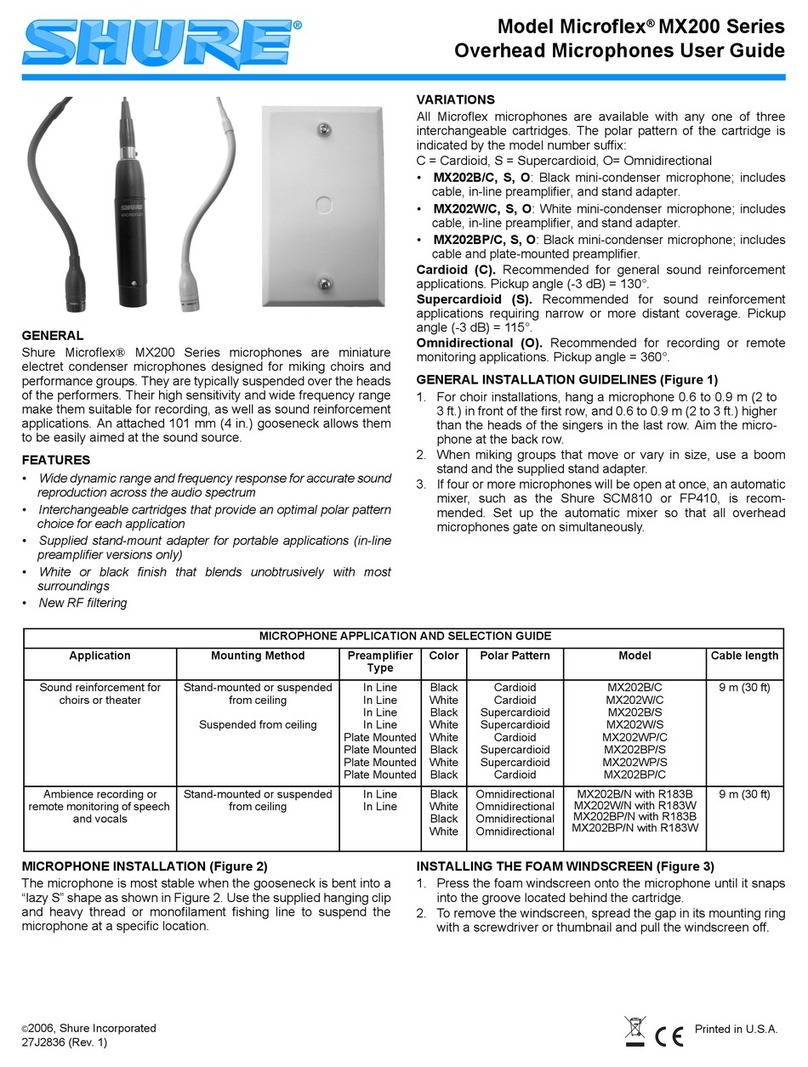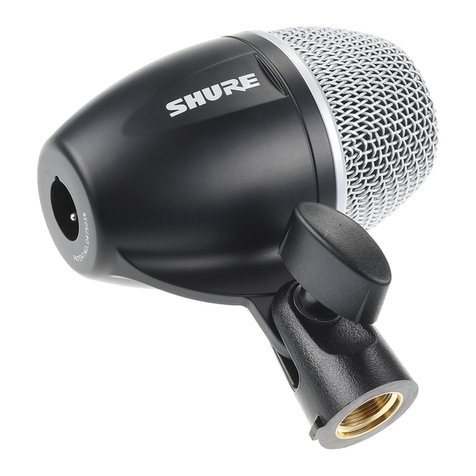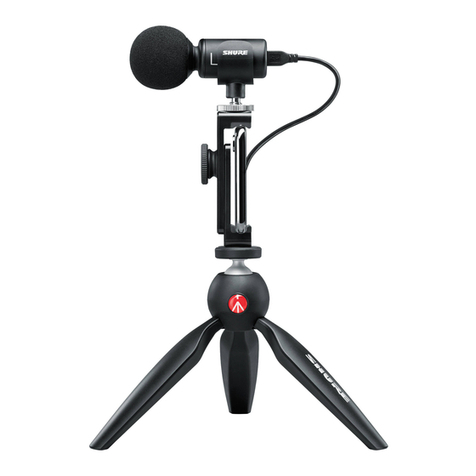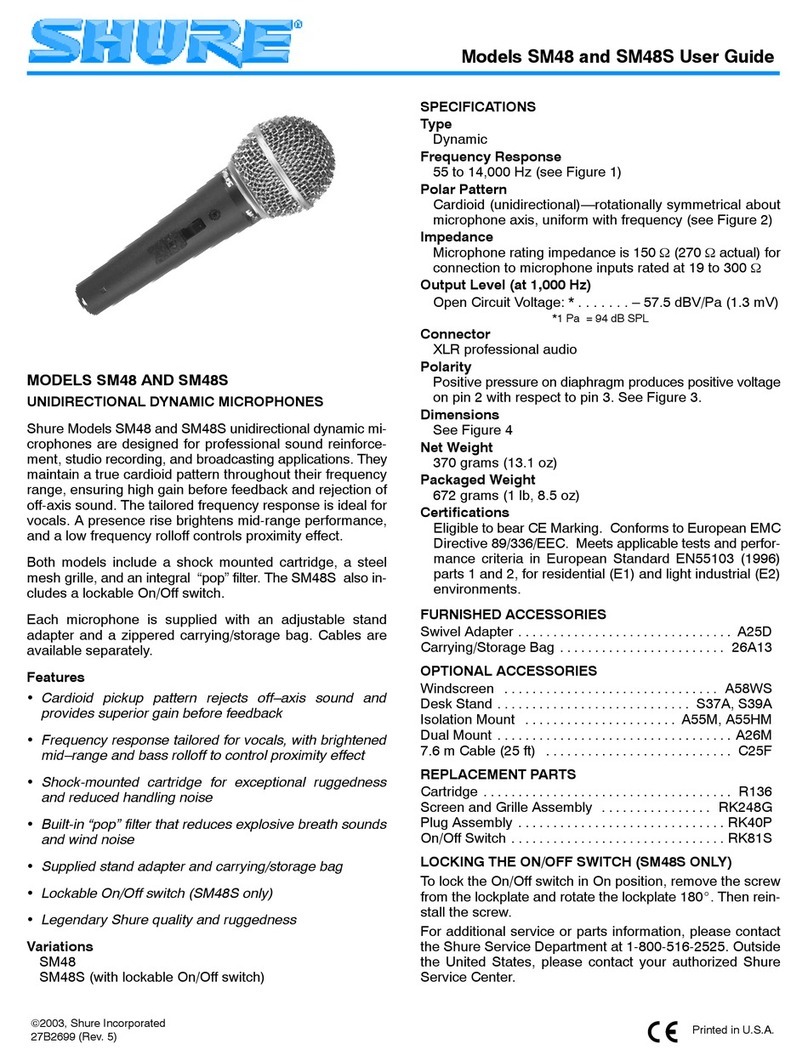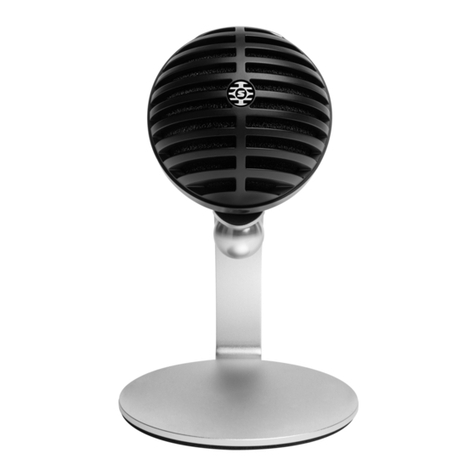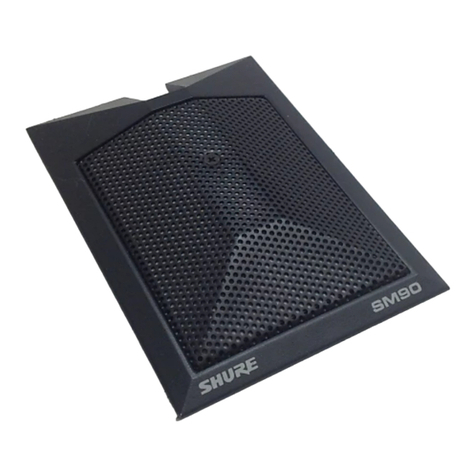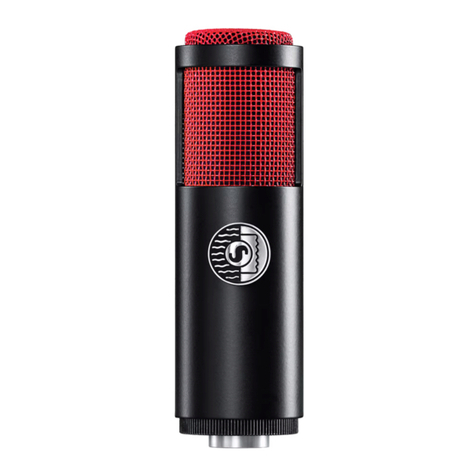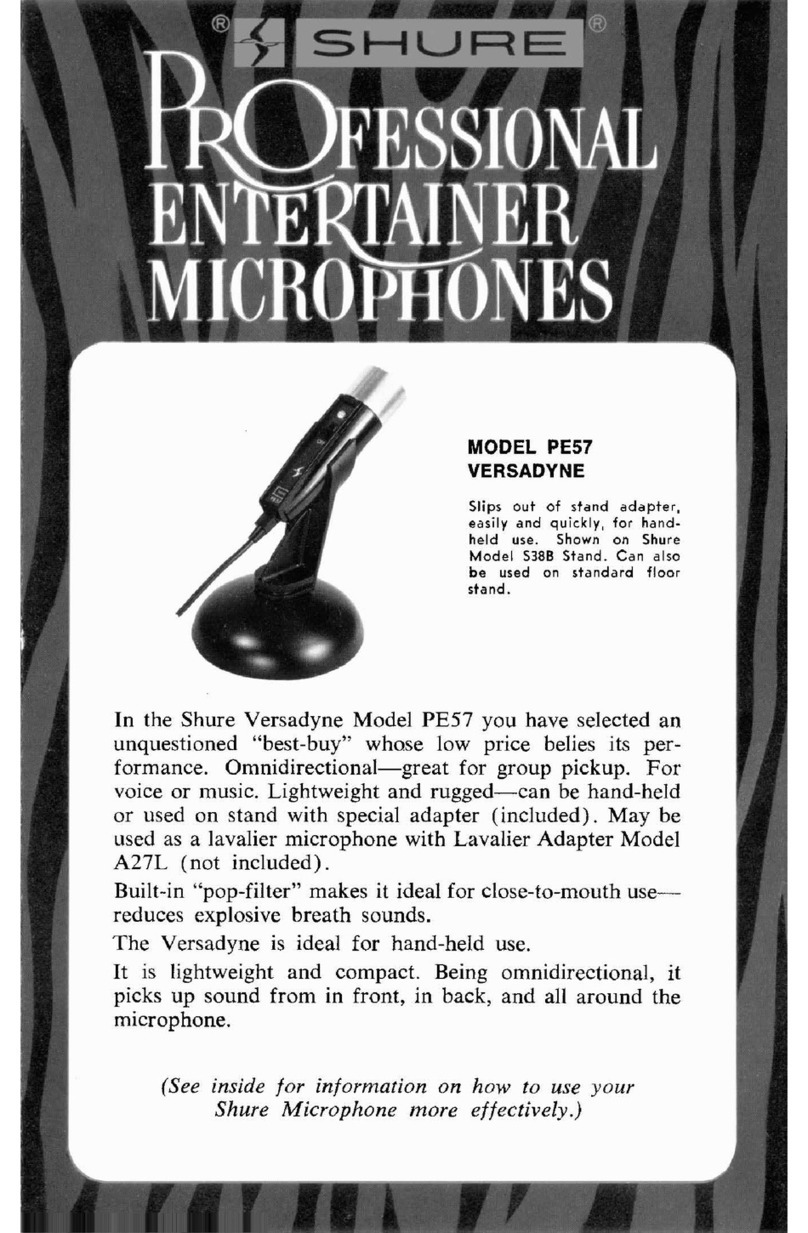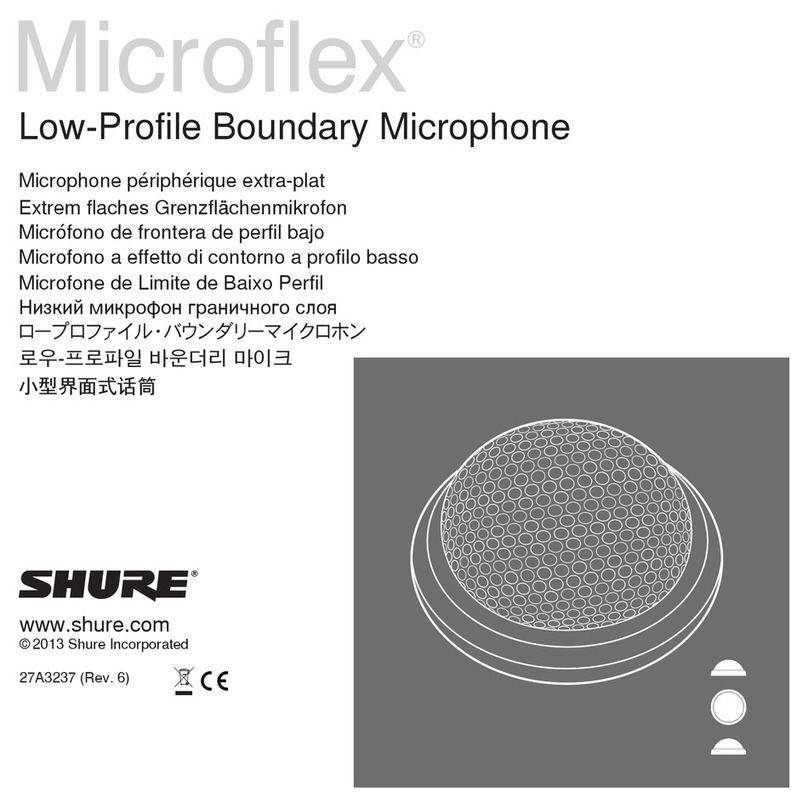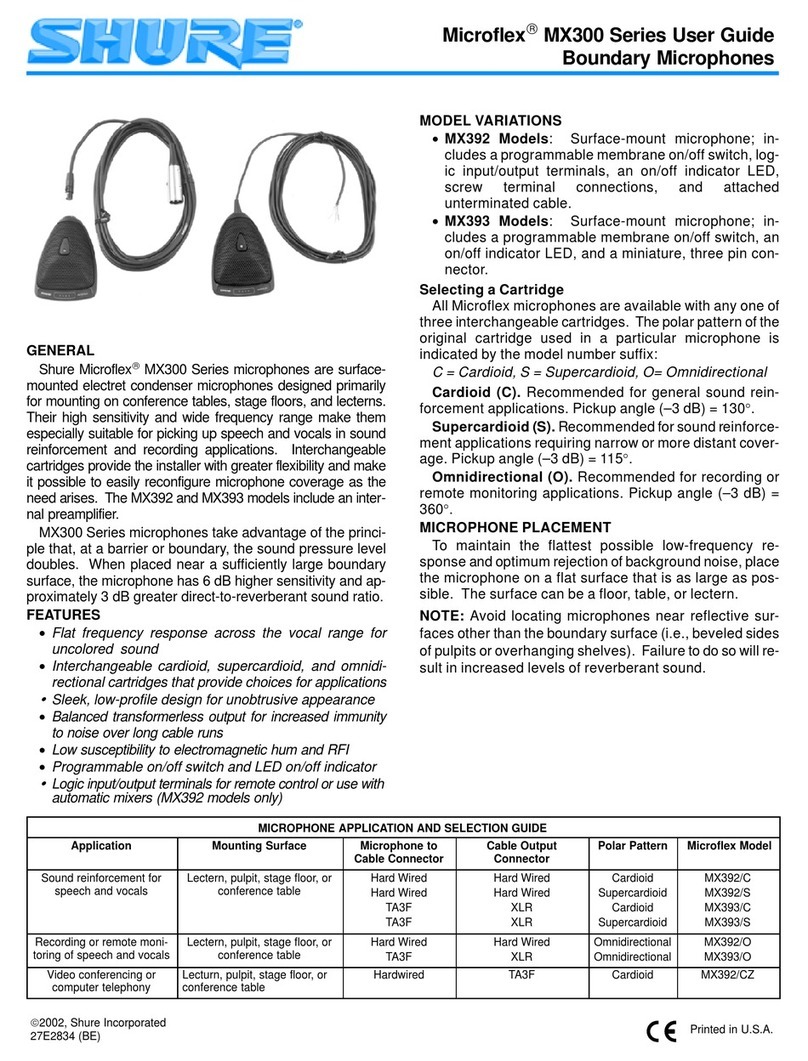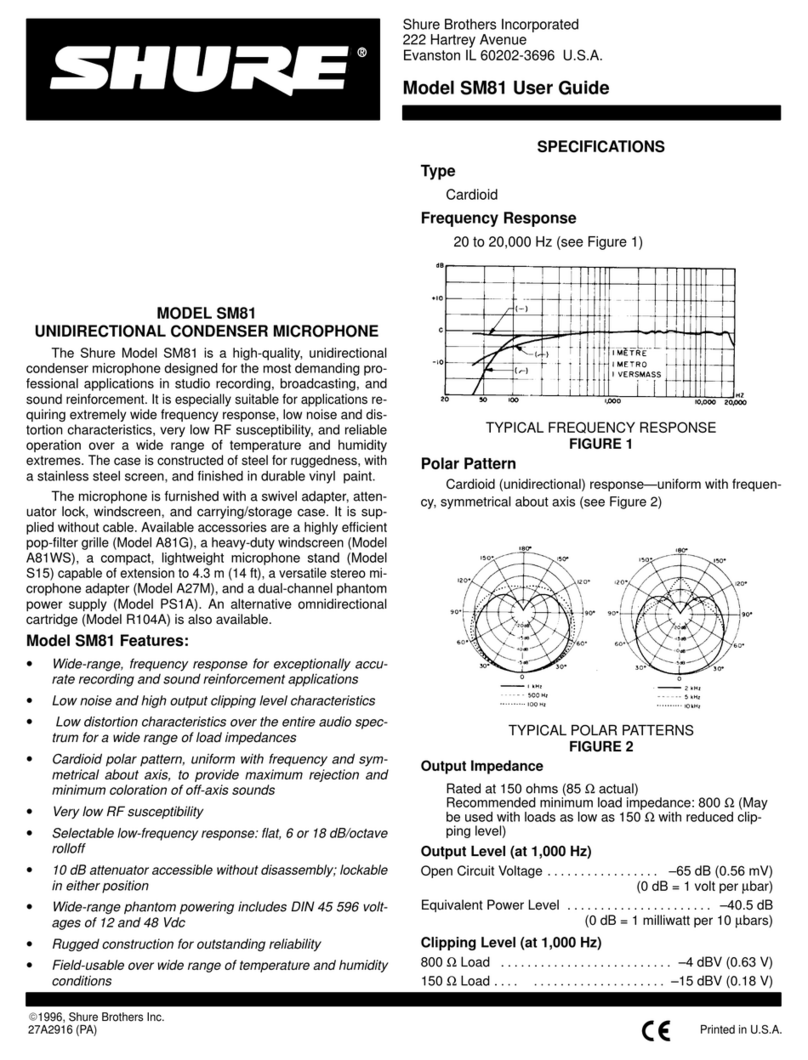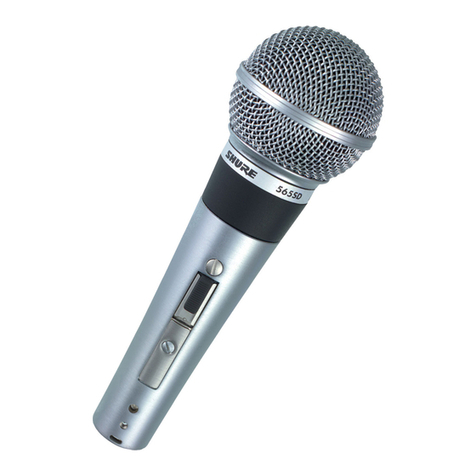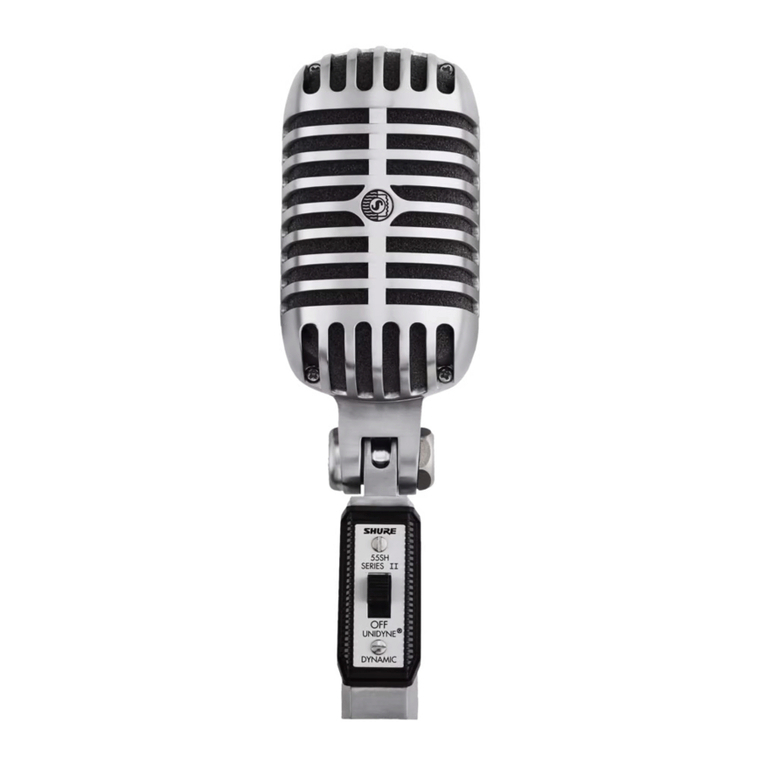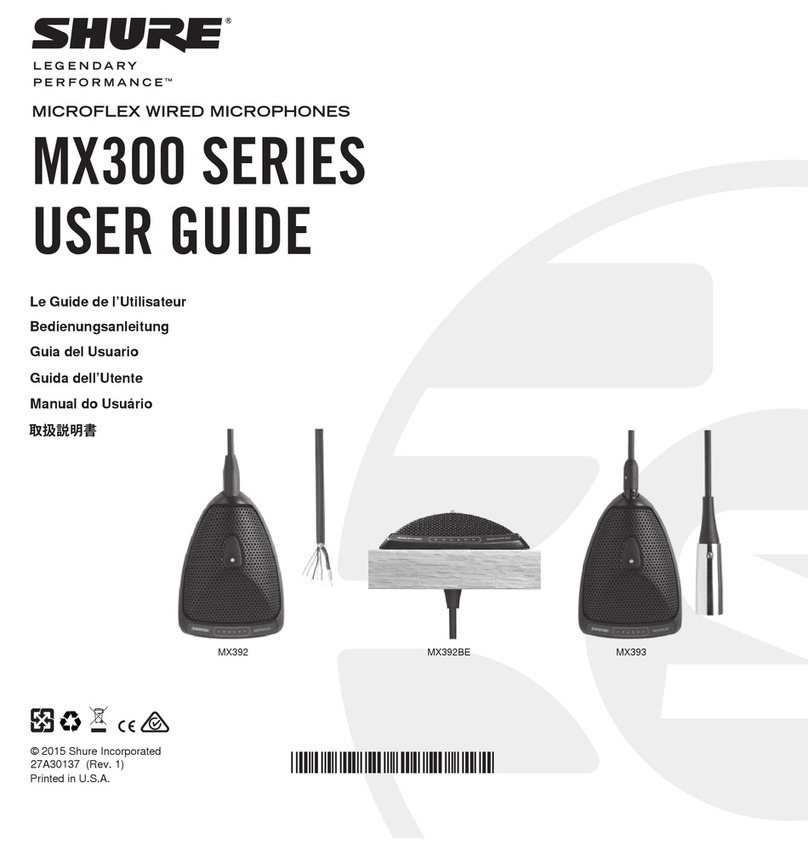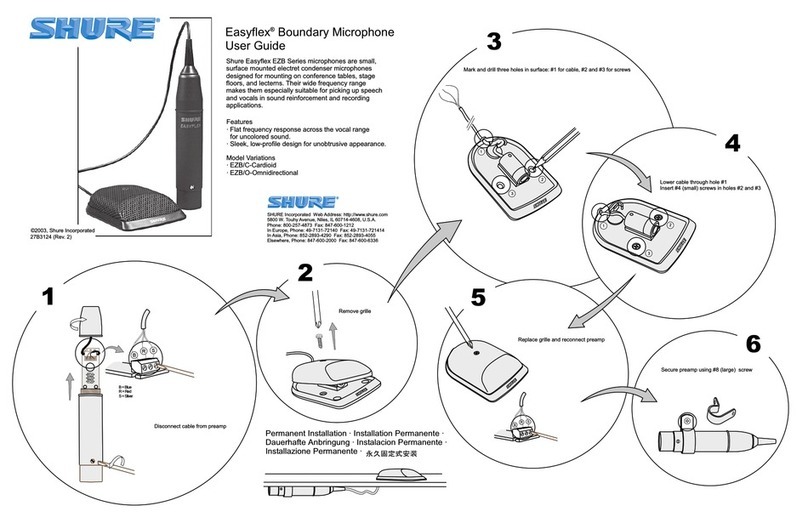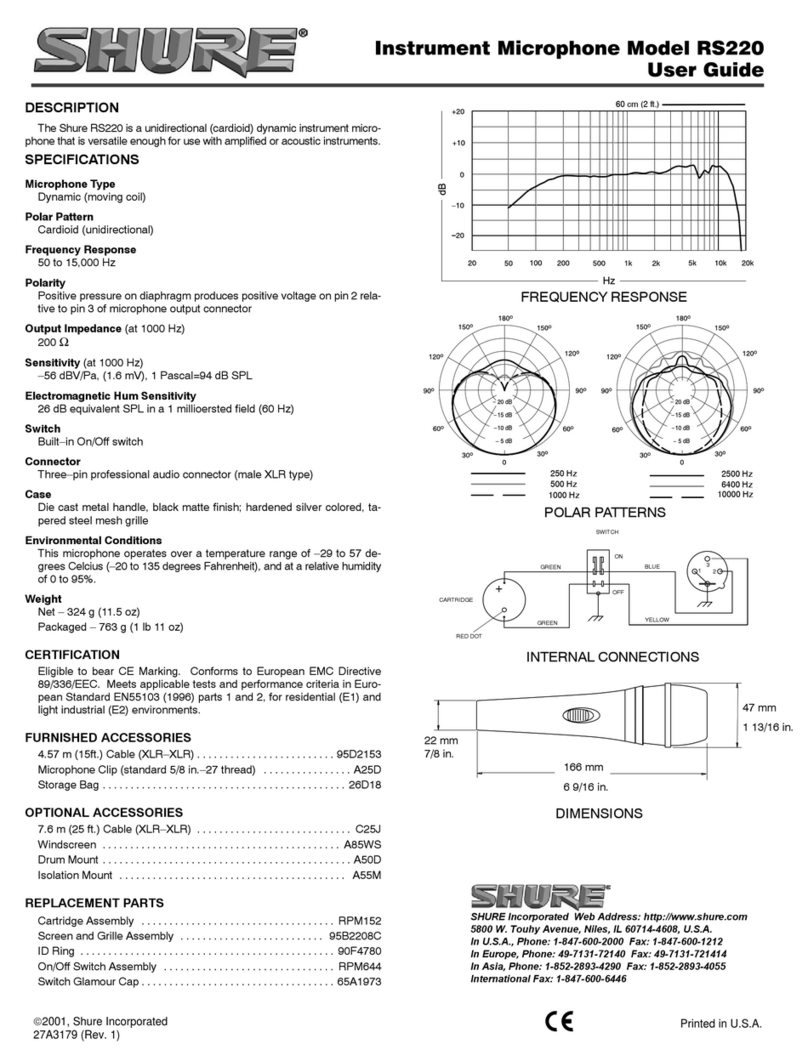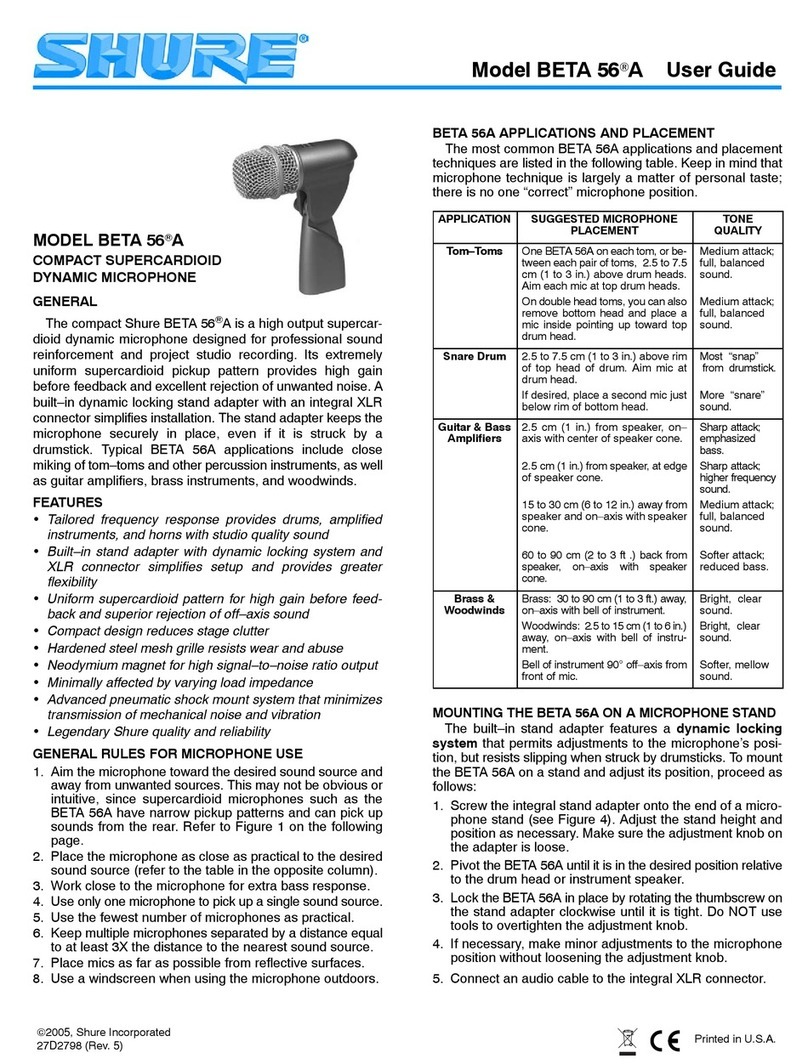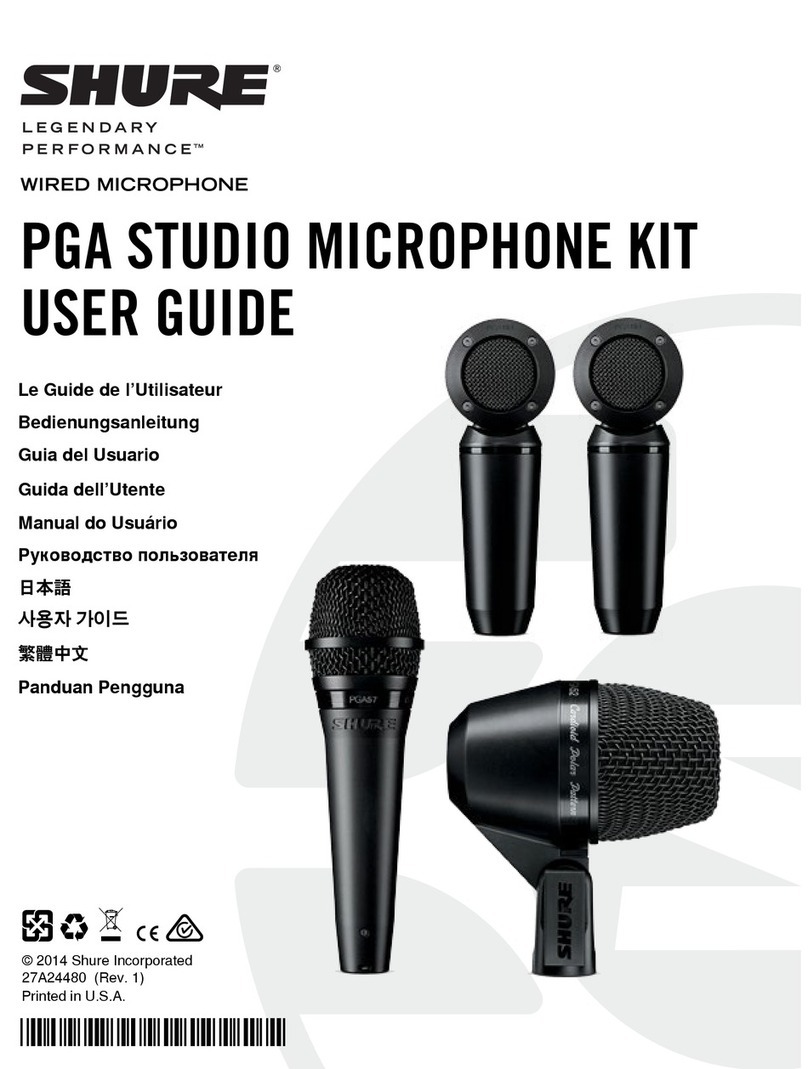GENERAL
This Guide provides detailed instructions for connecting Shure Citizens Band microphones
to most CB transceiver models. If your CB transceiver is not listed in the Guide, please
send a schematic diagram of your CB transceiver to Shure Brothers Incorporated, 222
Hartrey Avenue, Evanston, IL 60204. The schematic will be returned along with wiring in-
structions for your particular microphone-transceiver combination.
All wiring information in the Guide pertains to Shure Models CB41, CB42, CB43, CB44,
CB45, 526T, and 526T Series
11.
Only Model 526T Series
I1
is designed for use with CB
transceivers requiring five-conductor shielded cable.
The Shure CB Wiring Guide has been compiled as an aid to Shure CB customers. Shure is
not liable for damage due to wiring errors, errors in the Guide, or for any consequential
damages.
HOW TO USE THE GUIDE
CB transceiver manufacturers are listed alphabetically in the left column. Model numbers
are listed below each manufacturer's name.
The following six columns are headed by the cable lead colors used in Shure Citizens Band
microphones. The upper row of colors (upper case) refers to the cable leads used in the
526T Series
11.
The lower row of colors (lower case) refers to the leads used in the 526T,
CB41, CB42, CB43, CB44, and CB45. (The GREEN, high-impedance audio lead is omitted
from the column headings. See the .next paragraph for connection instructions for the
GREEN lead.) Under each lead color are instructions for connecting that lead to the CB
transceiver connector or input circuit. A number used as a column entry (e.g., #1, #2, etc.)
refers to a numbered connector pin. When a connector has unnumbered pins, or when the
cable is wired directly to the CB transceiver input, identification of the circuit, along
with color code if applicable, is provided in the entry under each Shure cable lead color.
Typical connector numbering is shown in Figure
1.
The right column is headed Notes. When special considerations apply, a numbered entry
in this column refers to the Notes listed at the bottom of the page. When a transceiver
audio input requires a high-impedance microphone connection, Note 4 will appear in the
last column. This indicates that the GREEN audio lead (instead of the WHITE) should be
used in Models CB41, CB42, CB43, CB44, and CB45. When Notes 6 or
9
appear, only
the 526T Series
I1
is suitable for connection to that transceiver.
Refer to the bottom of the page for a list of abbreviations used.
TYPICAL CONNECTIONS TO CB TRANSCEIVER AUDIO INPUT
Shure Citizens Band microphones are suitable for replacement of most original equipment
ceramic or dynamic, high- or low-impedance microphones. Shure Citizens Band microphone
cables are wired so that the WHITE cable lead carries the preamplified or low-impedance
audio output, and the GREEN cable lead carries the high-impedance audio output. If a
microphone has both a GREEN and a WHITE cable lead, be sure to insulate the unused
audio lead.
When replacing a ceramic microphone supplied with original equipment, the high-impedance
connection will usually (but not always) be used. If your CB transceiver is not listed in
the Guide, and you do not know whether a high- or low-impedance microphone is required,
connect the microphone for low impedance (WHITE lead). Check whether there is sufficient
output from your transceiver. If the modulation output is too low, reconnect the mlcro-
phone for high impedance.
The shield completes the microphone audio circuit, and often also is the ground for the
switching circuit. Connect the shield to'chassis or circuit ground of the transceiver Take
care
not
to connect the shield to chassis ground for those models where the Guide
TYPICAL CONNECTIONS TO CB TRANSCEIVER RELAY
OR ELECTRONIC SWITCHING CIRCUIT
Grounded switching
Most CB transceivers employ a grounded circuit to switch from the receive to the transmit
position. Shure Citizens Band microphones are wired for instant connection to grounded
switching circuits. The microphone cable connections are as follows.
1. Connect the RED cable lead to the terminal used to complete the transmitter circuit.
2. A. In Models CB41, CB42, CB43, CB44, CB45, and 526T, connect the BLACK lead
to the terminal used to complete the receiver circuit*.
B. In Model 526T Series
11,
connect the YELLOW lead to the terminal used to
complete the receiver circuit*.
'This will usually be a ground return from the loudspeaker. If a microphone switching
contact is not required for the loudspeaker ground, insulate the BLACK or YELLOW
lead referred to in A or B.
3. In Model 526T Series
11.
the BLACK lead
mnv
nccacinnrll\,
ha
rnnntirnrl
fnw
,
.-fi..,w-+-
,
-
-
-
-
,
-.----I-~~~r~~
UI
IUYYI~EU
IUI
a
a~pala~c
receiver ground circuit in addition to the loudspeaker ground. In most cases, how-
ever, insulate the BLACK lead.
4. In Model 526T Series
11,
connect the BLUE lead to chassis or circuit ground of the
transceiver. Take care not to connect the shield to chassis ground for those models
where the Guide specifies connection to circuit ground.
Isolated switching
In some transceivers, an isolated circuit is required to switch power supply voltages rather
than grounds.
Shure Models CB41, CB42, CB43, CB44, CB45, and 526T are suitable for transceivers that
switch the power supply in the microphone only to the transmitter circuit. All these micro-
phones except Model CB41 require internal modifications that are fully cies~ribedin the
data sheet. In Model CB41, move the Grounded-Isolated switch to the Isolated position.
Model 526T Series
I1
is suitable for connection to transceivers that switch the power supply
in the microphone from the receive to the transmit position, and for units that also require
a separate switching contact for the loudspeaker ground return. No internal microphone
modifications are needed.
The microphone cable connections for isolated switching circuits are as follows.
1. Modify the microphone (all models except 526T Series
11)
as described in the data
sheet.
2. Connect the RED lead to the isolated terminal used to complete the transmitter circuit.
3.
A. In Models CB41, CB42, CB43, CB44, CB45, and 5261, connect the BLACK lead
to the terminal used for power supply voltage.
B. In Model 526T Series
11,
connect the BLUE lead to the terminal used for power
supply voltage.
4. In Model 526T Series 11, connect the BLACK lead to the terminal used to complete
the receiver circuit. If the power supply is not switched to the receiver circuit by a
microphone switching contact, insulate the BLACK lead.
5. In Model 526T Series 11, connect the YELLOW lead to the loudspeaker ground return.
If a microphone switching contact is not required for the loudspeaker ground, insulate
the YELLOW lead.
Special switching
Some transceivers (indicated by Note
9
in the last column) require special internal micro-
phone modifications before cable connections are made. Only the 526T Series
I1
is
recommended for use with these transceivers. Refer to the microphone data sheet for
general descriptions of the required internal changes. If you need further information,
please write to Shure Brothers Inc.
-
-.
-
..
-
.
.
specifies connection to either circuit ground or power supply.

